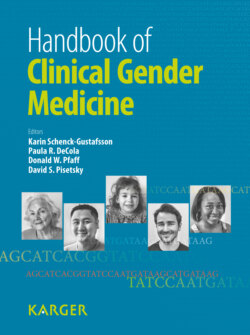Читать книгу Handbook of Clinical Gender Medicine - Группа авторов - Страница 93
Allostatic Load Index
ОглавлениеEpidemiological work by Seeman et al. [9] has led to AL algorithms predictive of numerous tertiary/clinical outcomes. Utilization of longitudinal data from the MacArthur studies on the Successful Aging cohort led to a count-based AL index representing the following 10 biomarkers: 12-hour urinary cortisol, epinephrine, and norepinephrine output; serum dehydroepiandrosterone-sulphate, high-density lipoprotein (HDL) and HDL-to-total cholesterol ratio; plasma glycosylated hemoglobin; aggregate systolic and diastolic blood pressures, and finally the waist-to-hip ratio. Individuals’ values falling within high-risk quartiles with respect to the sample’s biomarker distributions are dichotomized as ‘1’ and those within normal ranges as ‘0’. Once tabulated, these values are summed to yield an AL index ranging from a possible 0 to 10 which can then be used to predict health outcomes. Beyond these traditional biomarkers, many others have been incorporated into dozens of studies worldwide (fig. 2) using similar count-based formulations and/or sophisticated statistical analyses.
